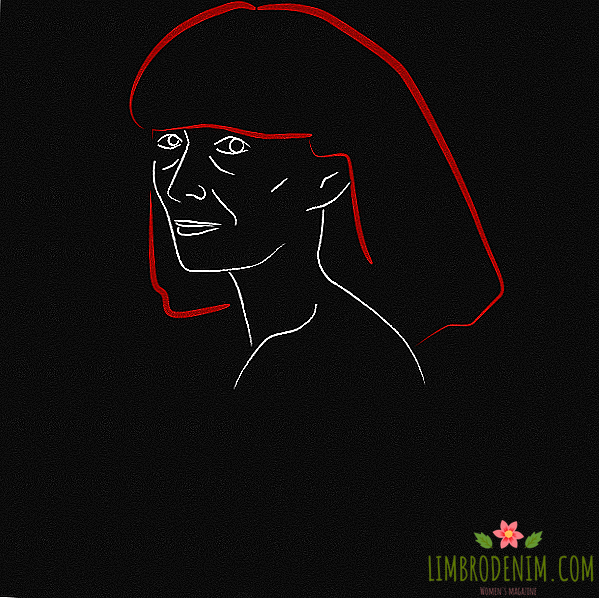Why participants in sex chats are not material for art
Text: Natalya Zaitseva
In St. Petersburg "FotoDepartament" is now holding an exhibition of photographer Sergey Artemyev "Privat and tea" - a project that was conceived to cause questions to the public, and eventually summoned to the artist. For the project, Sergey Artemyev projected images of participants in sex chats on the walls of night houses and photographed the resulting image. He did not ask the models for permissions, considering that once video broadcasts are in “open access” on the Internet, the models do not need to agree to participate in an art project. We do not think so, and we think that such a project is an occasion to once again talk about ethics on the Internet and in art, exploiting the private life imprinted in the global network.

The aim of the photographer was to study the border between private and public, demonstrating human vulnerability in the virtual space. And, let's be fair, he succeeded - by abusing this very vulnerability. “Taking screenshots, I was looking for awkward moments from everyday life, hidden between shots, moments when girls were not ready to be seen and shown,” writes Sergey Artemiev in the text accompanying the exhibition.
The image from the webcam on the wall of the Khrushchev wall increased dozens of times is a powerful image. The photographer, on the one hand, hacks into private space (apartment windows) with the projector's light, on the other hand, hints at what the residents of these houses are doing outside the windows of these apartments, and makes it clear that their intimate activities are not so intimate. “And I see you,” says this work, “and I’ll show you to everyone who missed it.”
Given how society treats women who have sex for money (even if it is online sex), such a project is also a shade of revelation. In this form - without the consent of the models, without their direct speech, but with the explanation that they are models of sex chats - the whole project looks like a board of shame and is very similar to the typical slat-shaming, that is, shame for frivolous sexual behavior.
There is also a class aspect: photographs show aesthetic patterns of a certain social layer (carpets, cheap blankets, leopard blouses) - everything that is read by the target audience as bad taste, which is openly ironic and laughable, forgetting that all this is the reverse the poverty side. The exploitation of such aesthetics in the space of fashion galleries and magazines by people who have attained a higher level of well-being is pure classism.

The whole project looks like a board of shame and is very similar to the typical slat-shaming.

“I don’t have a goal to denounce girls working in chat rooms, or to condemn them all the more,” artemyev objects. “It’s impossible to determine a person’s personality with absolute certainty by photographs (projection distorts them, erases facial features, turning portraits into a collective image) ". However, looking even at the teaser images from the exhibition, it is clear that women can see them quite well, they can be recognized. Judging by the interviews with Russian models of sex chats, most of them hide their occupation from relatives and colleagues in their main job - and they succeed. That is, the “accessibility” of sex chats, which the photographer insists on, is not so obvious. To see the participants and participants of intimate chats, you need if you do not register, then at least go to a specific site. And this step is not all.
Sergey Artemyev argues that the alienation of images occurred before him and without his participation: they say, the models, voluntarily gave all rights to use their image to the owners of chat rooms, and already those in turn "mercilessly exploit the images of girls - put them in unauthorized space, broadcast aggressive advertising "(it is even strange that with such an unpaid and aggressive nature I only found out about the existence of sex chats last week - from the news about the Artemyev exhibition). “It seems to me that at this moment there is a violation of legal and ethical norms,” the photographer claims, discarding responsibility for joining those who violate these norms.
This raises the question of what is generally acceptable in art and on the Internet. Sergey Artemyev is not the first photographer to use the image from webcams. There is an opinion that such a practice is quite acceptable in a photographic environment, special cleaning of rights is not required here, and ethical shooting is a question that everyone finds the answer for himself (except when the victim, in the case of the Russian Federation, finds an article of the Civil Code 152.1 "Protection of the image of a citizen" and goes to court). Leading Russian artists have repeatedly used anonymous photos of people from social networks. The transfer of images from the Internet to the gallery space itself is considered an artistic act - and this technique seems to be quite jaded.

However, this is not about artistic value, but about ethics. The transfer of the image of a person from his easily visible, but still personal, network garden into the gallery space is often perceived by a person as painful. But his protest is usually not heard: the artist is protected by the status and the absence of a distinct prohibitive law, and the Internet user is not protected by anything but his shame, which often occurs after the fact and under the influence of the well-known thesis “I am guilty” - do not need to be substituted ( Private and tea "can be predicted that the prosecution of the victim will go on two fronts: slat-shaming and insufficient concern for confidentiality).
The artist insists on his role as an observer and a reflector of those processes that already occur without his participation. Although in fact it is he who is actively involved in these processes. Sergey Artemyev with his project raises the question of the vulnerability of images on the Internet, but this vulnerability is exacerbated at the moment when he points to it. This raises another question that art critics love. Where is the boundary between the demonstration of the problem and its reproduction? For example, is this article joining those who alienate and replicate images of girls from sex chats — by drawing additional attention to a project that we consider unethical?
You can ponder over this for a long time and, having developed this speculative thought to the limit, retire to live in forests without electricity, garbage and people - because the logic of collective responsibility in the modern world makes almost every step of yours a crime. But if we talk about individual responsibility, then everything is simple. The photographer did not ask for the consent of the models to publish their images - and if someone looks ambiguous as a result of this project, then this is definitely not a member of sex chats.





